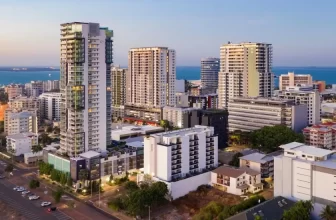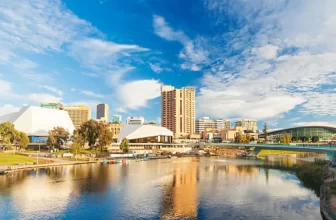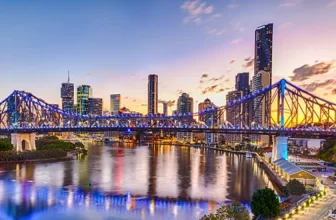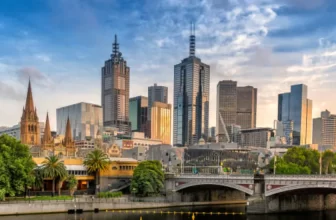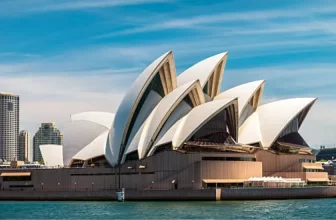Best Cities to Study and Live in Australia: Where Dreams Take Flight
Study Guide in Australia
Let’s face it. When someone says “study abroad,” one of the first names that pops up is Australia. And there’s a solid reason for that.
Sun-kissed beaches. A culturally rich and diverse society. World-class education. Add to that a healthy lifestyle, post-study work rights, and globally recognized degrees, it’s no wonder so many students are typing “Study guide Australia” into their search bars.
Australia isn’t just beautiful. It’s powerful. Especially in the academic space. It blends academic excellence with opportunities for international students to live, work, and grow in a thriving economy.
If you’re dreaming of studying under the Southern Cross, or sitting in a top-tier campus while sipping your flat white, it’s more than possible. It’s a clear path. And this guide will walk you through it.
Why Australia is a Magnet for International Students
Over 600,000 international students call Australia home each year. Surprised? Don’t be.
This isn’t a trend. It’s a testimony.
Australia is a global hub for students who want more than just a degree. It offers a multicultural society, safe environment, and open work policies that support international aspirations. Students flock from Asia, Europe, America, you name it.
Let’s not overlook the quality of teaching. Universities here are research-driven, industry-integrated, and deeply student-focused. And guess what? The Australian government actively supports international education with transparent policies and funding options.
Whether it’s lifelong friendships or launching a dream career, Australia delivers big time.
Top Universities in Australia You Should Know About
Australia is home to seven of the world’s top 100 universities. The academic infrastructure is rock solid. Here are a few names you need to remember.
1. University of Melbourne
Consistently ranked top in Australia. Offers over 400 areas of study with intense specializations in biomedicine, law, and engineering. Research-rich and culturally diverse thanks to its urban location.
2. Australian National University (ANU)
Located in Canberra, ANU is known for political science, environmental studies, and astrophysics. It’s small in size but massive in global impact. Think Nobel Prize-winning faculty.
3. University of Sydney
Established in 1850. It’s famous for architecture, public health, and humanities. Their campus resembles a fairy-tale Hogwarts scene, but with fast WiFi.
4. University of Queensland (UQ)
Great for biotechnology, marine science, and psychology. Its strong industry ties make job placements seamless.
5. Monash University
Globally recognized for medicine, pharmacy, and IT. Based in Victoria, it has a reputation for innovation and international partnerships.
Others worth mentioning: University of New South Wales (UNSW), University of Western Australia (UWA), and Macquarie University.
Most Popular Courses Among International Students
Let’s talk studies. What are students rushing to pick?
1. Business and Management
Universities offer modern, globally relevant MBAs. With specialization in marketing, finance, HR, you’ll graduate ready to lead.
2. Engineering and Technology
Huge scope across mechanical, civil, petroleum, and software engineering. Bonus? There’s a major demand in Australia’s infrastructure and mining sectors.
3. IT and Computer Science
From AI to cybersecurity, programs are cutting-edge. Tech giants often recruit straight from campus.
4. Health and Medical Sciences
Nursing, public health, veterinary science, dentistry and more. High-quality research facilities put Aussie health grads in global demand.
5. Environmental and Marine Biology
Given Australia’s biodiversity, there’s no better place to study the environment. Fieldwork is rich. Studies are sustainable. Nature is your lab.
6. Hospitality and Tourism
With Australian tourism being a billion-dollar industry, this course is not just theory, it’s deeply practical.
7. Creative Arts & Design
Australia inspires creativity. Whether it’s fashion, media, or fine arts, the culture here nurtures expression.
What Does It Cost to Study in Australia?
Let’s break it down.
Tuition Fees
Undergrad degrees range between AUD 20,000 to AUD 45,000 annually.
Postgrad courses (like Master’s or MBA)? Anywhere from AUD 22,000 to AUD 50,000 depending on the field and university.
Living Costs
The Department of Home Affairs requires proof of AUD 24,505/year as the minimum living cost. But realistically, you’ll spend AUD 1,500 to AUD 2,500/month, depending on the city and lifestyle.
Expenses include:
- Rent
- Food
- Transportation
- Utilities
- Health insurance (mandatory for student visa, OSHC)
Sydney and Melbourne are pricier. Adelaide and Brisbane are more affordable. Shared housing saves a LOT.
Scholarships You Can (and Should!) Apply For
Yes, Australia is generous with scholarships.
Here are some top options:
Australia Awards Scholarships (Government-funded)
Covers full tuition, living allowances, airfare, and more.
Destination Australia Scholarship
Supports both local and international students studying in regional campuses.
Research Training Program (RTP)
Ideal for PhD or research-based master’s programs. Covers tuition + stipend.
University-specific Scholarships
- Melbourne International Undergraduate Scholarship
- ANU Chancellor’s International Scholarship
- Monash International Merit Awards
(Hint: Most universities auto-consider you based on your academic merit.)
Pro tip: Always check deadlines months in advance and tailor your applications carefully. Don’t spray and pray.
Career Prospects Post Study
Australia isn’t just about the study. It’s about what comes next.
Thanks to the Post-Study Work Visa (485), international students can work in Australia for 2 to 6 years after graduation, depending on the qualification and location.
Fields with high demand?
- Healthcare (nurses, aged care professionals)
- IT (developers, security analysts)
- Engineering
- Teaching
- Construction and trades
Australia also has a skill shortage list. If your job matches it, your chances of permanent residency skyrocket. You study here. You stay here. It’s that real.
Documents Required to Study in Australia
Here’s your go-to checklist:
- Valid Passport
- Offer Letter from an Australian university
- Confirmation of Enrolment (CoE)
- Genuine Temporary Entrant (GTE) Statement
- Academic transcripts and certificates
- English language test results (IELTS, TOEFL, PTE)
- Proof of funds
- Overseas Student Health Cover (OSHC)
- Passport-size photos
- Statement of Purpose (SoP)
Keep both physical and scanned copies ready. Be organized. Trust me, it makes life 10x easier.
Australia Student Visa Process (Simplified)
You’ll apply for Subclass 500 – Student Visa. Let’s make it simple.
Step 1: Get your Confirmation of Enrolment (CoE) from a recognized institution.
Step 2: Create an ImmiAccount on the Department of Home Affairs website.
Step 3: Gather documents (refer above).
Step 4: Apply online, pay the visa fee (~AUD 710), and submit all documents.
Step 5: Do your biometric scans and attend an interview (if required).
Step 6: Wait for approval, usually anywhere from a few days to a few weeks.
Once approved, your visa lets you stay for the duration of your course + additional months after.
Let’s Wrap It Up
Studying in Australia is more than just books and lectures. It’s a lifestyle. It’s a launchpad. From exploring the Great Barrier Reef on weekends to building a future in a top-tier company, Australia offers the complete package.
This study guide Australia isn’t just about getting you into university. It’s about making sure you thrive, academically and personally. From costs and scholarships to the visa process and career options, the path is clear, and so is your potential.
Your future in Australia? It starts today. Let’s go pack that dream.
Top 10 FAQs About Studying in Australia
1. Is Australia safe for international students?
Absolutely. It’s one of the safest places to study. Globally ranked for both safety and student satisfaction.
2. Can I work while studying in Australia?
Yes! You can work up to 48 hours per fortnight during semesters and full-time during breaks.
3. Do I need IELTS to study in Australia?
Usually yes, unless you’re from an English-speaking country or studied in English-medium institutions.
4. What’s the average monthly cost of living?
Between AUD 1,500 to AUD 2,500, depending on where and how you live.
5. Is PR (Permanent Residency) possible after studying?
Yes. Many students go on to apply for PR through skill-based pathways after studying suitable courses.
6. Which city is best for international students?
Melbourne and Sydney top the charts, but Brisbane, Perth, and Adelaide offer great value and lifestyle.
7. Are scholarships easy to get?
Competitive, but very possible with a strong academic profile and timely application.
8. What’s OSHC, and why do I need it?
OSHC = Overseas Student Health Cover. It’s mandatory to ensure healthcare access during your study period.
9. How long does student visa approval take?
Anywhere between 1 week to 2 months, depending on your application and country of origin.
10. Can my spouse come with me?
Yes, under a dependent visa. They may also be allowed to work in Australia.


